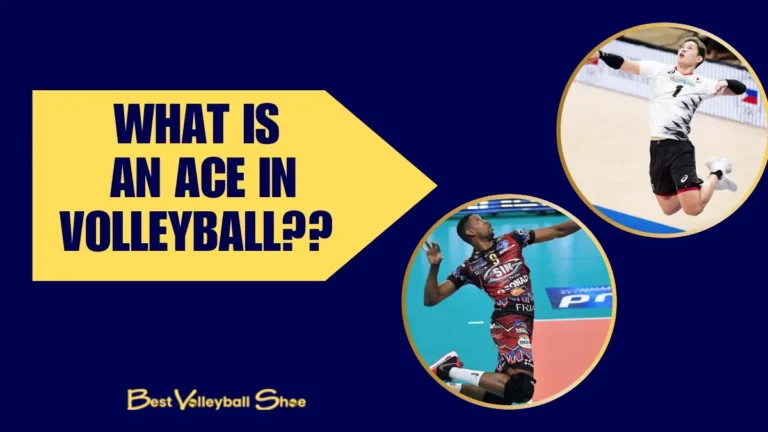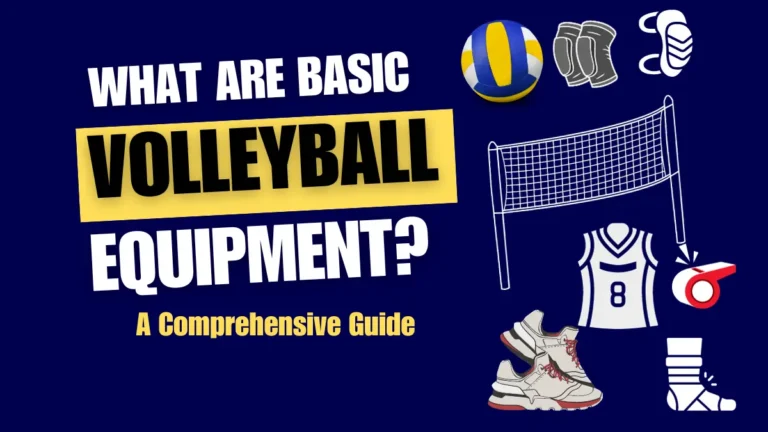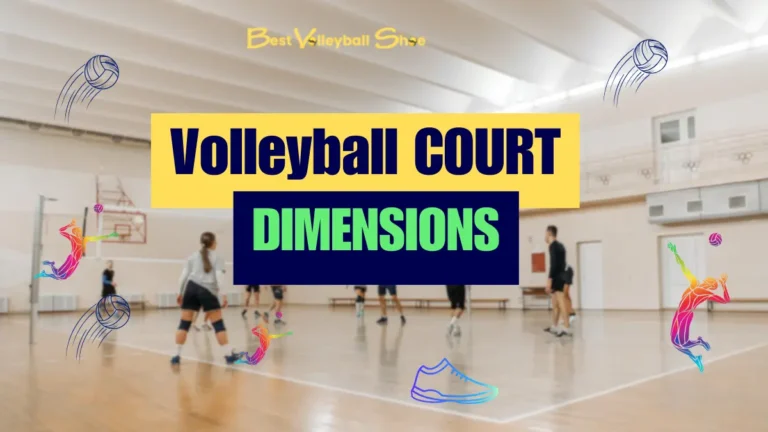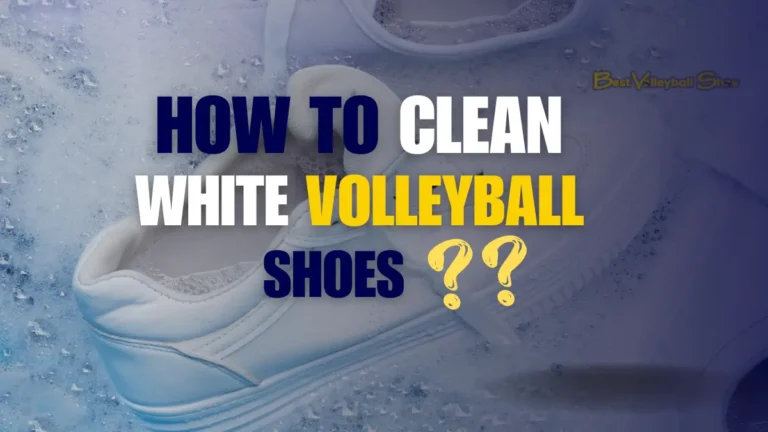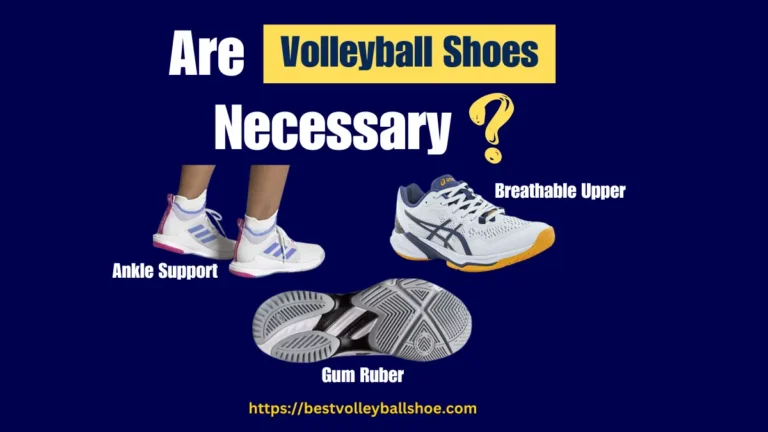Can I Use Badminton Shoes for Volleyball?

This is not surprising to me if an athlete especially a beginner searches for such questions as “Can I use badminton shoes for volleyball? or vice versa”. To the best of my experience, the answer to this question is simply in a sentence:-
“Overwhelmingly No and also occasionally Yes”
Why No? if you are a professional volleyball player and play as a spiker
Why yes? If you are a multi-sport athlete and pro in none of the sports
In fact, this was a one-liner summary, however, if you wanna read the details and some interesting facts then take a look below.
We will be focusing on the commonalities and differences in both games and shoe requirements. Moreover, we will also discuss the suitability of volleyball shoes for badminton.
Why do Beginners search for this Question?
It is important rather pertinent to find the perfect kick as it is directly linked with performance and fitness. In fact, the right pair can make a world of difference.
The design of the shoes, their weight, and the way they are constructed can greatly impact the performance and the movement of the players on the court.
The reason behind this may be any of the following: –
The ultimate objective is to find the best fit for enhanced performance and comfort on the court. However, it is equally challenging to find the perfect pair for both games be it volleyball or badminton.
Volleyball vs Badminton
For beginners, I will give a brief table for a better understanding of both games and the key differences:-
| Aspect | Badminton | Volleyball |
| Equipment | Shuttlecock and racket | Volleyball |
| Court Dimensions | Smaller court, 20ft wide (singles), 44ft wide (doubles) | Larger court, 30ft wide, 60ft long |
| Team Size | Singles & Doubles | Six players on each team |
| Scoring System | Rally scoring 21 points (best of three games) | Rally scoring to 25 points (best of five sets) |
| Serving Technique | Underhand serve | Overhand serve |
| Physical Demands | Agility, speed, quick reflexes | Jumping, blocking, spiking, physical contact, diving |
| Game Objective | Score points by sending the ball over the net | Score points by sending ball over the net |
| Common Injuries | Ankle injuries, shoulder and elbow injuries, wrist injuries, knee injuries, eye injuries | Ankle and knee injuries, finger and hand injuries, shoulder injuries, back and neck injuries, facial injuries, concussions |
| Power and Strength Demands | Score points by landing a shuttlecock in opponent’s court | Requires explosive power for spikes, blocks, jumps, and physical play |
After reading the above table, I can conclude the following:-
I will also add one more aspect i.e. physical attributes. Volleyball players are more heightened and bulky so their shoe requirements will be more inclined toward durability, cushioning, and stability.
Now let’s talk about the key differences in the shoes of both games!
Volleyball Shoes and Badminton Shoes: What’s the Difference?
We will be evaluating both volleyball shoes and badminton shoes on the basis of key characteristics including cushioning, weight, outsole and midsole construction, ankle support, traction, breathability, flexibility, and design.
Cushioning
Note: The volleyball shoes are more cushiony and shock absorbent compared to the badminton shoes.
Weight
Note: The volleyball shoes are heavier compared to the badminton shoes.
Outsole
Note: The volleyball shoes have bit-aggressive rubber used in the construction of the outsole.
Mid-sole
Note: The midsole of the volleyball shoes is thicker compared to the thinner midsole of volleyball shoes
Upper Material
Note: Both shoes have mesh-made upper material however, the material used in volleyball shoes is a bit heavier compared to the badminton shoes. This is to withstand the pressure after spiking and max jumping.
Design
Note: Volleyball shoes have ankle support in addition to lateral stability.
Flexibility:
Note: Both shoes are designed to be flexible. However, Volleyball shoes have additional support with flexibility which is a game demand.
Ankle Support
Note: Volleyball shoes are more centric on ankle support compared to badminton shoes.
Fit:
Note: Both shoes are designed to be fit. However, Volleyball shoes have an element of comfort.
Bottom Line
The difference between volleyball shoes and badminton shoes is based on game requirements. The game requirement of Badminton is lateral movement whereas volleyball requires max jumping.
Compared to badminton shoes, volleyball sneakers are heavier in weight, constructed with solid material, and focused on cushioning in landing and lateral movements.
Considering the above, I won’t suggest you to wear badminton shoes for volleyball
Now let’s discuss a few similarities!
How are Volleyball Shoes and Badminton Shoes Similar?
Both shoes also share some similarities which are as under:-
Playing Surface
Both games are played on the court. So these shoes are designed to be best-suited footwear for the court. The outsole of both shoes is made up of rubber material to provide decent traction on the court
Comfort
Both shoes are designed to provide the ultimate comfort to the athlete’s foot. The inner material is constructed with breathable and comfy material to accommodate the foot for long plays.
Safety
Both shoes use reinforced toe caps or additional protection against injuries during abrupt stops.
Durability
In my opinion, this similarity is shared in all court shoes. Every court shoe is designed for durability. Obviously, none of the shoemakers want a bad name for their shoes to be of thin and quality.
Looks
Volleyball and badminton shoes come in various colors and designs to cater the individual style preferences. Players often consider the visual appeal of the shoes, including color choices, patterns, and overall design.
Some players prefer shoes that complement their team uniform for a cohesive look on the court.
While aesthetics don’t directly impact performance, the visual design of the shoes is a personal preference that adds to the overall experience for the player.
Are Volleyball Shoes Good For Badminton?
When it comes to choosing the right footwear for sports like badminton and volleyball, it’s important to understand that volleyball shoes can work for a casual badminton game, but they might not be the best choice for professional or competitive play. Here’s why?
Bottom Line
Volleyball shoes can be comfortable and supportive, but they might not be the ideal choice for serious badminton players. The differing demands of each sport mean that specialized shoes are essential to achieve peak performance and ensure your safety on the court.
So, if you’re gearing up for a competitive badminton match, consider investing in a pair of badminton-specific shoes to give yourself the edge you need to excel in the game.
Are there any All-Rounder Shoes for both Games?
Fortunately Yes! but with few limitations.
I am talking about the Asics Gel Rocket 10, which is a very famous court shoe with decent traction and cushioning.
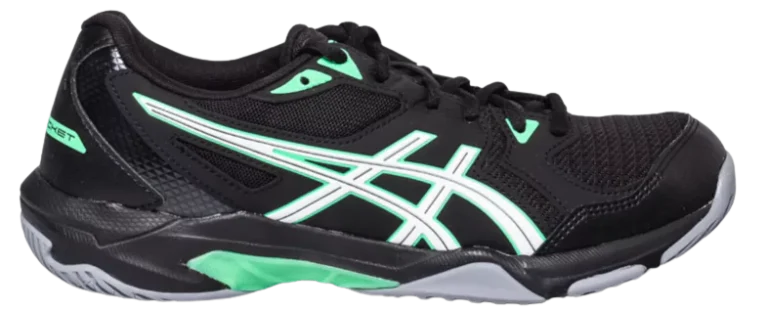
Why Should You Wear Dedicated Shoes?
Swapping out your sports shoes might seem convenient, but it’s generally not recommended. The reason? Well, it all boils down to the unique design features of each type of athletic footwear.
Sports shoes are meticulously crafted to cater to the specific biomechanical requirements of their respective sports, and trying to use them interchangeably can lead to some unwelcome consequences.
For instance, if you use football shoes for volleyball. In fact, it will be nearly impossible to play in these shoes. Because they are designed to penetrate the grassy ground. Similarly, if you wear sprinter shoes for playing football you won’t be able to put your heel on the ground.
Rather than boosting performance the wrong shoes will serve as a recipe for discomfort, and injury instead of comfort and performance.
So, to sum it up, the advice is clear: stick to sport-specific shoes. If want to make an informed decision then see my article on Best Volleyball Shoes. They’re engineered to enhance your performance and keep you safe by providing the right support for the unique movements of your chosen sport.
In the world of athletics, there’s no one-size-fits-all solution when it comes to footwear, so invest in the right shoes for your game, and you’ll be on the path to better performance and fewer trips to the doctor’s office.
Final Thoughts
Selecting the right pair of sport-specific shoes is absolutely crucial, and it’s not something that can be emphasized enough. The reason for this is simple: different sports place unique demands on your feet, and your footwear needs to align with those demands perfectly. It’s not just about style; it’s about functionality, performance, and safety.
When we talk about sport-specific shoes, we’re diving into the nitty-gritty details. It’s about the materials used in the shoe, the design of the soles, and striking the perfect balance between breathability, comfort, and durability. These factors are tailored to the specific requirements of your sport.
In essence, it’s not just a matter of aesthetics or brand loyalty. The right shoes play a significant role in your performance and safety on the field, court, or track.
So, remember that when you invest in sport-specific footwear, you’re not just making a fashion statement – you’re making a smart choice that can elevate your game and keep you in top shape while you pursue your athletic passions.
Frequently Asked Questions?
Can I use running shoes to play volleyball?
The answer to this question is more strictly negative compared to the badminton shoes. This is because running shoes share fewer similarities with volleyball compared to badminton shoes.
Moreover, I have also written a detailed article regarding wearing running shoes for volleyball you may read the same for a better understanding.
